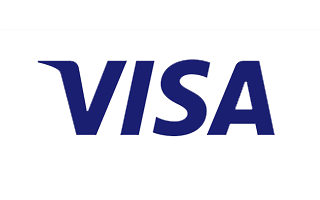
Finding the best camera for children is difficult. Some are just starting in photography. Others are more qualified and prefer a professional DSLR to a traditional children's camera.
How to choose a camera for a child?
The most important thing to consider is age. A child prefers different devices at different ages.
Younger kids will love shooting with durable, easy-to-use cameras. For them, photography is more like a game and cameras are like toys. Fortunately, there are toy-like cameras that work and can take pictures.
Later, however, they may find the artistic and technical side of photography more interesting. They may be concerned with video resolution, zoom range, or even want to make time-lapse videos, for example.
They may be interested in film cameras and other analog products.
Also, a child has different interests and hobbies at different ages. They can use these cameras to document their favorite sports or places. Keep that in mind and choose waterproof or shock-resistant products if necessary.
Scroll through our suggestions and find the camera that best meets the needs of the child you are buying.
1. Action Camera for Teenager: AKASO Brave 7 LE

Based on cutting-edge technology, AKASO has released a new weatherproof Brave 7 LE action camera that provides a smooth experience no matter what kind of video you want to shoot. The IPX7 waterproof design makes it a snowproof and water repellent camera that can withstand wind and rain, and the waterproof case supports marine sports up to 30 meters below the surface of the water.
AKASO is the world leader in designing high-quality action cameras with smart designs and video resolution of 4K and 30FPS with 20-megapixel photography. AKASO Brave 7 LE is a tool with rich functions that is useful when you want to shoot a video for a video blog. It's an easy-to-use and ideal camera with a waterproof case. It is equipped with two screens for comfortable selfie shooting, and also has a video resolution of 4K and 30FPS, 20-megapixel photography, and a stabilization function of the 6-axis gimbal structure. It also supports Wi-Fi connection and HDMI connection, and the AKASO GO smartphone app can also be used on iPhone and Android devices.
In addition to its excellent features, the AKASO Brave 7 LE comes with several accessories such as a remote control and two 1350mAh batteries. We have also prepared a case for diving up to 40 meters on the IPX7 standard waterproof (up to 1 meter) body.
2. Entry-level DSLR for Teenager: Nikon D3500

The Nikon D3500 is one of the best cameras for children who want to learn how to take professional pictures. It is a basic camera that can be used to aim and shoot with its fully automatic modes. But it also offers the ability to learn how to set the exposure manually. With its 24.2 MP and the ability to shoot in RAW (NEF), it offers excellent image quality. And the 11 fast autofocus points add to that.
Its video resolution is also quite satisfactory, allowing you to capture Full HD 1080 / 60p videos. The D3500 is also ideal for capturing actions, as it can take 5 frames per second. Of course, it comes with a rechargeable battery that can be used for 1,550 shots per charge. It is light and compact, which makes it ideal for travel. You can even connect it to your smartphone!
All its features make it a young and fun camera. It's a DSLR, which means it works with professional technology, but it's still great for being someone's first camera.
3. Point and Shoot Digital camera for Teenager: Sony DSCW800/B

Available in color black, the Sony DSC-W800 boasts a powerful 20-megapixel sensor, 10x digital zoom, image stabilizer to save your photos from those moments when your handshakes when shooting, and a series of extras that make it a very good option. Among those extras is the "beauty" effect that the Sony DSC-W800 brings, with which you can instantly retouch portraits, from the camera itself, eliminating small imperfections and enhancing the beauty of the subject, without knowing about portrait photography.
Ideal for the amateur photographer looking for an incredibly small compact camera with more than decent performance. But above all, if you are on a fairly fair budget, the Sony DSC-W800 is your camera with 5x optical zoom and 360 sweep panorama.
The Sony DSC-W800 is decently priced, which makes it one of the cheapest compacts out there right now.
4. Digital Camera for Teenager: Canon PowerShot ELPH 180 Digital Camera

I always say that you can't have everything in a camera. Except for the Canon PowerShot ELPH 180, which imposes with its powerful 20.0 Megapixel CCD sensor with the DIGIC 4+ Image, nothing common in compact cameras of such a small size, its optical image stabilizer, its video in quality has 720p HD video capabilities, its speed of 10fps shooting, its Wi-Fi and Bluetooth connectivity, its folding screen, many other advantages.
Whether you're a party selfie shooter, travel or landscape photography, the Canon PowerShot ELPH 180 is a great option for your child. Its price here is a bit expensive, but you are assured of a compact camera backed by an excellent brand and that will last you for a long time.
The great plus of using a Canon PowerShot ELPH 180 digital camera compared to a classic DSLR is that the camera lets you see in real-time how your settings affect the scene you want to photograph. It’s an invaluable tool to learn your way in photography.
5. Instant Cameras for Teenagers: Kodak Mini Shot

10-megapixel camera. Prints 5x7.6 cm photos (the size of a credit card), although the image can be sent to the smartphone or tablet for viewing and editing. Small in design with a 1.7-inch LCD viewfinder. With automatic focus and exposure, white balance, and gamma correction. Kodak Mini Shot uses '4Pass dye-sublimation' printing technology and employs 'Mc mini photo print' cartridges.
Kodak Mini Shot Instant, is both a camera and a printer. The hybrid product that prints on 4Pass photo papers developed by Kodak have a CCD sensor that offers 10 Megapixel resolution. The device, which does not have a memory slot, transfers the photos taken to the mobile phone with the help of the iOS or Android application (Bluetooth technology).
Printing can be done by making some minor adjustments to the application. The device has a small 1.7-inch screen and the photo can be viewed here before printing. The camera can also print on 5.3 x 8.6 or 5.3 x 5.3 cm (depending on the paper size) 4Pass paper. There is also a built-in flash on the camera. In this way, lighting is also provided in low light environments. By the way, I would like to say that the product does not have a video recording feature. The camera has a 620 mAh battery and can be charged via the micro-USB slot.
Kodak Mini Shot Instant can print the photographs it takes. The camera displays the photos taken on its screen, so you can print instantly. However, saving photos is only available on a smartphone. Of course, the purpose of this method is to ensure that the photos taken are unique. When we look at their competitors, there are models that some of them do not even have a memory and it is not possible to save the photographs taken. In Kodak, there is at least the possibility to register on a mobile phone.
6. Mirrorless camera for Teenager: Canon EOS M200 Compact Mirrorless Camera

With the EOS M200, Canon has upgraded its entry-level APS-C mirrorless camera. Although the APS-C size CMOS sensor with a resolution of 24 megapixels remains, the small housing hides new and extended functions as well as a current Digic-8 image processor.
The Canon EOS M200 is only available in a set with the EF-M 15-45 mm IS STM and the small set lens also suits the 108 x 67 x 35 millimeters (W x H x D) compact housing very well. When ready for operation, the camera with a lens weighs just 422 grams, so it's also light. The lens itself only weighs a little more than 120 grams.
The low weight also has its price, and this is noticeable in the housing material. The plastic housing feels "grabbing" and instead of a rubber coating, the camera only has a grained plastic surface on the front. The same feel continues with the small but adequate thumb recess on the back of the camera. Despite the cheap-looking material, the workmanship is clean and precise. The EF-M bayonet of the camera is made of metal, whereas that of the lens is made of plastic.
As is usual with system cameras, the back is dominated by the screen, which is a touchscreen. The 7.5 cm (3 ”) monitor of the EOS M200 can be tilted upwards by 180 ° so that selfies are not a problem. The maximum brightness of the display is almost 860 candelas per square meter, which makes it surprisingly bright for an entry-level camera. The brightness is particularly important because it decides whether the photographer can still see something on the display even in bright ambient light because there is no viewfinder, not even optional. Also, a control pad with predefined quick selection buttons and three dedicated buttons (video shutter, menu, and playback button) join the controls on the back.
The operation of the camera via the touchscreen is easy and precise by hand. The quick menu key, or Q key for short, is an integral part of the operating concept. By pressing on it, the photographer instructs the camera that the recording settings should now be changed.

















